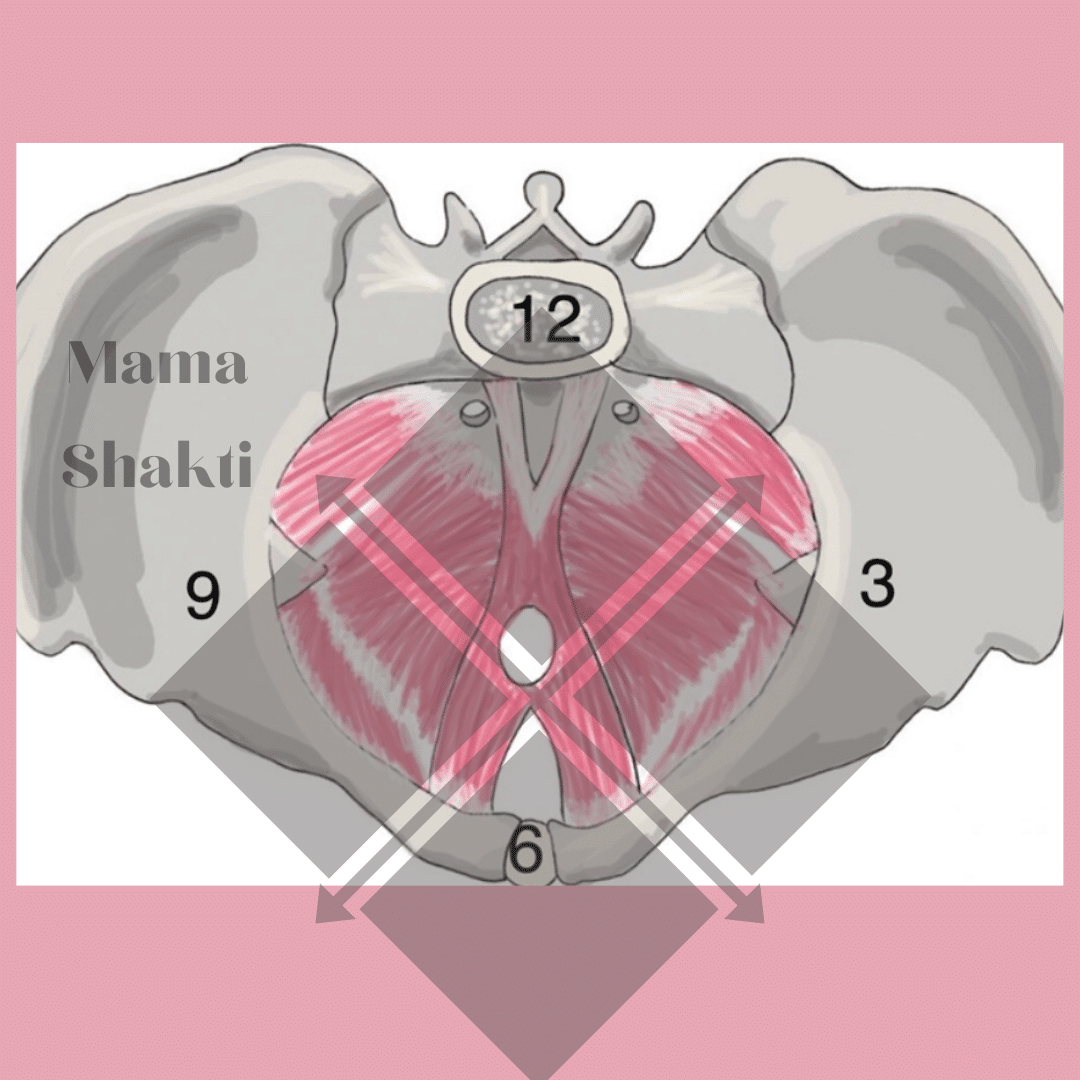I was talking to my prenatal yoga teacher training students this weekend about the pelvic floor and the importance of being familiar with it as a prenatal yoga teacher.
We were discussing healthy pelvic function during pregnancy and postpartum when someone asked the question, “Are the Mula Bandha and the pelvic floor the same thing?”
Now, many of the trainees in this prenatal yoga teacher training also hold a 200-hour yoga certification which means they have some background knowledge of the Mula Bandha, but others are newer to the practice of yoga, so this was new to them.
I realized that many folks may be asking this question, especially those in the birth worker world so I wanted to take an opportunity to give everyone a basic understanding of the two.
The Mula Bandha is a Sanskrit term meaning “root lock”. The Mula Bandha refers to the general area of your root chakra and is the yogic practice of contracting the root chakra up and holding it in a contracted action. The root chakra is located at your perineum, which is the area between your anus and genitals.
Yoga practice is a practice of uniting the energy of the physical body with the prana (energy) of your breath, mind, and spirit. So, there is an energetic component to the practice of the root lock.
Engaging Mula Bandha is practiced preventing the escape of energy, specifically apana vayu, or downward flowing energy.
It is contraindicated when we are bleeding during menses as it disrupts the downward flow of blood.
In addition to having an energetic aspect, it also acts as a physical practice of strengthening those pelvic floor muscles, however, there is little emphasis placed on the relaxation or releasing of the pelvic muscles following the contraction.
Many times, I have heard yoga instructors cue to “release” the hold with no further verbal cues after that. The practice of Mula Bandha or “root locking” is contraindicated in folks with hypertonic (too tight or tense) pelvic floor dysfunction. The problem here is that not everyone is aware of the state of their pelvic function, so it is not a practice I like to teach to a group of yoga students in a class.
I also here yoga instructors give the verbal cue to “imagine that you are cutting off the flow of urine” to root lock or engage Mula Bandha. This is an OK verbal cue, but it could use some improvement.
When we are urinating and we actively cut off the flow of urine mid-stream, we are engaging the front ¼ of our pelvic floor called the urogenital triangle. But there are 3 other sections of the pelvic floor that we are leaving out of this action. They are the area around your anus (think those muscles used to hold in a fart) and the 2 sides of your pelvic floor, under your sitting bones or ischial tuberosities.
Think of your pelvic floor like the face of a clock divided into 4 quadrants like the image below.

So, now that you see this imagery, if you are only contracting the muscles that are used to cut off the stream of urine, you are leaving out quite a bit of your pelvic floor landscape by only engaging the area of your urogenital triangle.
How is Mula Bandha different than a Kegel or Pelvic Floor Contraction?
Mula Bandha engagement is not that different than a Kegel exercise. The same verbiage is used to cue pelvic floor engagement, at least in my personal experiences. When you have a pelvic floor physical or occupational therapist or a person trained in corrective exercise guiding a pelvic floor contraction, they will guide you to focus on all four quadrants of your pelvic floor during the contraction BUT they will place just as much emphasis on the releasing and the softening of the pelvic floor muscles, too.
This next part is the part where people who facilitate yoga classes can really put this knowledge into action.
The MIND-BODY connection between your mental/emotional brain and the physical area of your body that houses the pelvic floor need to have a healthy relationship to stay functioning optimally.
So, yoga teachers, birth workers and corrective exercise specialists can lead the pelvic floor contraction/release exercises and pair them with mindfulness tools like breath work and guided meditation with a pelvic floor focus to facilitate their client’s pelvic floor healing or strengthen their relationship to this area to prevent future dysfunction.
I have examples of such exercises and practices on my Instagram TV Channel and you can find it by my handle, @mamashaktiprenatalyoga.
The IGTV channel looks like the “PLAY” button on a TV remote and in that setting you will find “Series” in the upper left-hand corner.
· In the “Pelvic Health” series, you will find a guided pelvic floor meditation.
· In the “Breath Work” series, you will find both the 360 Breath and the Pelvic Clock Exercise.
Start with those videos and let me know what you think!
In Kindness,
Jessica
By Jessica Freedman, Founder of MamaShakti Prenatal Yoga
The Bella Prāṇa Wellness Collective is a yoga and meditation studio located in Tampa, FL. Jessica Freedman (she/her) is the Director of Family Programing at Bella Prāṇa and lead instructor in our Prenatal Teacher Training. She is a 200 HR RYT, Children’s author, a graduate of the University of Tampa, wife and mama. Jessica’s offerings include Prenatal Yoga Teacher Trainings, prenatal, postnatal, restorative for pregnancy, and core and pelvic floor classes.
